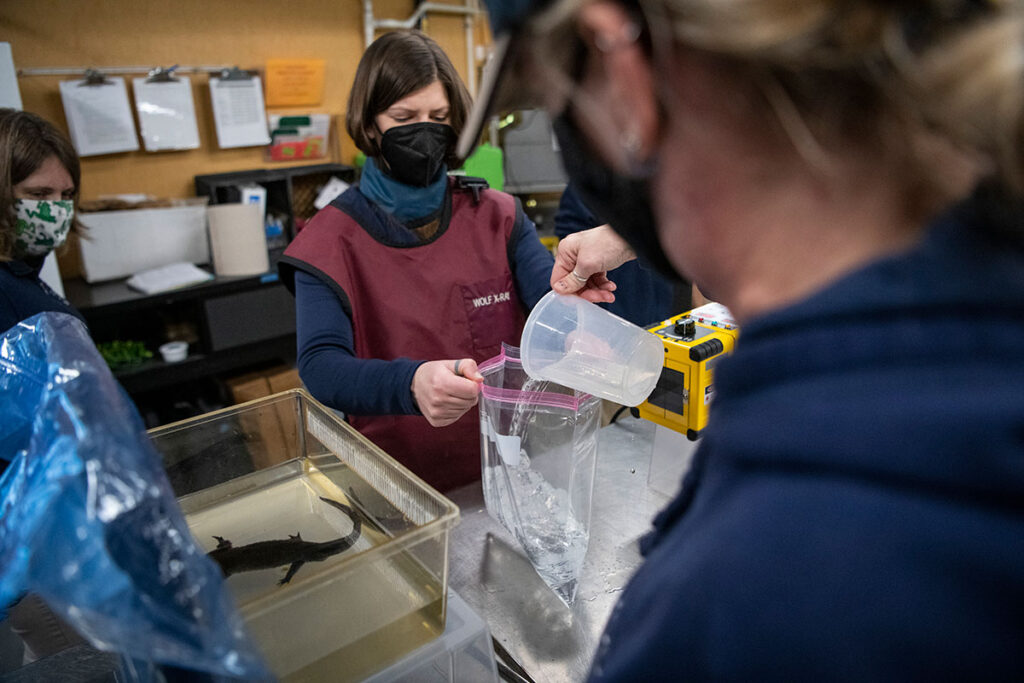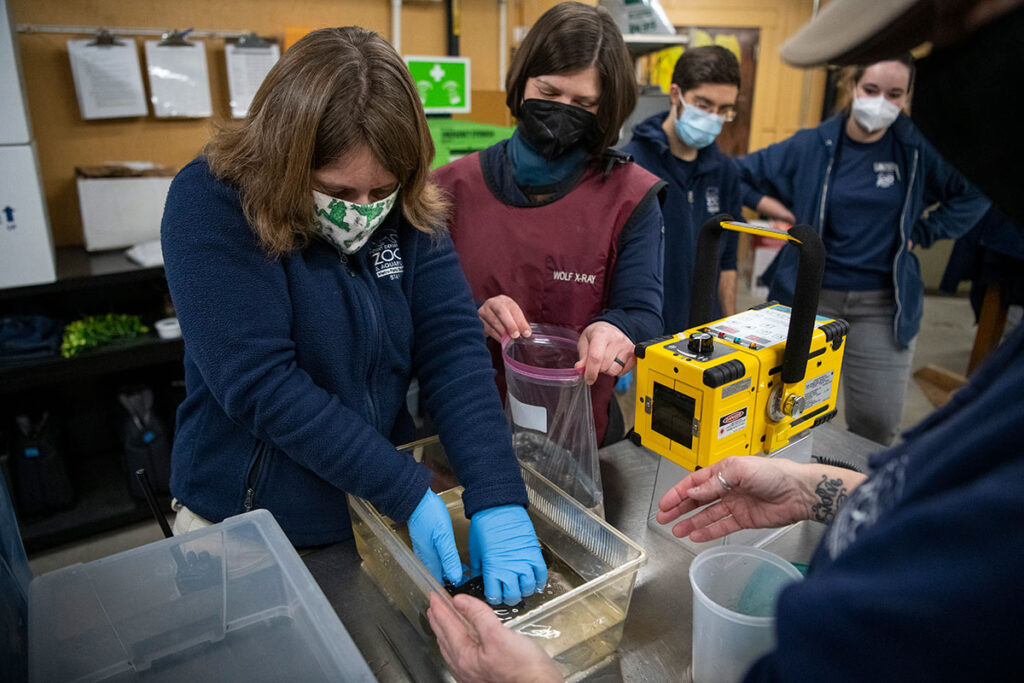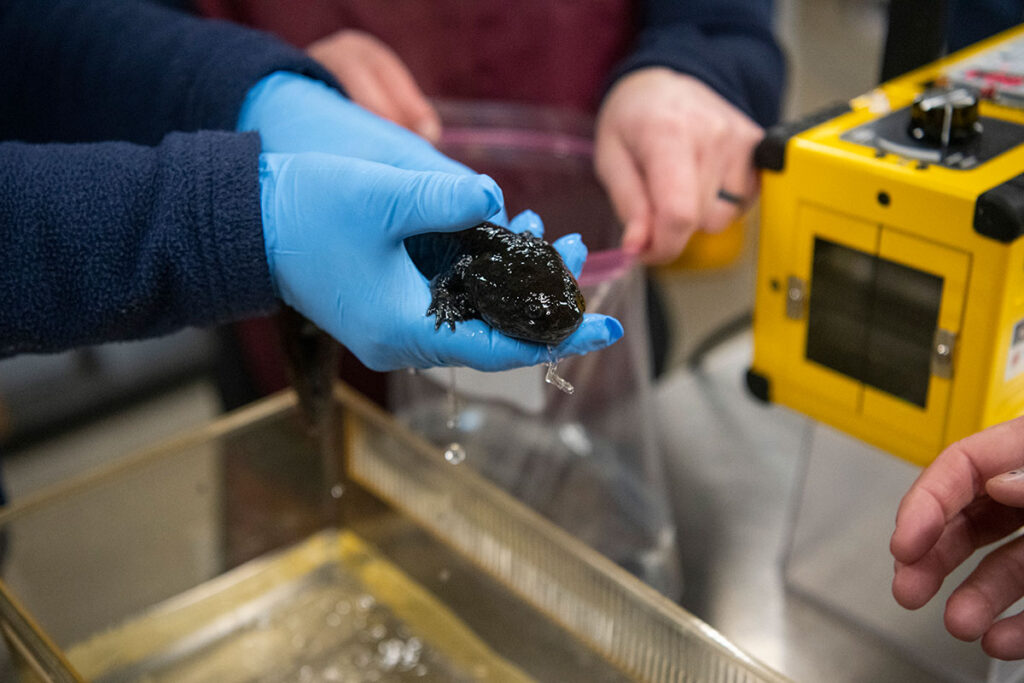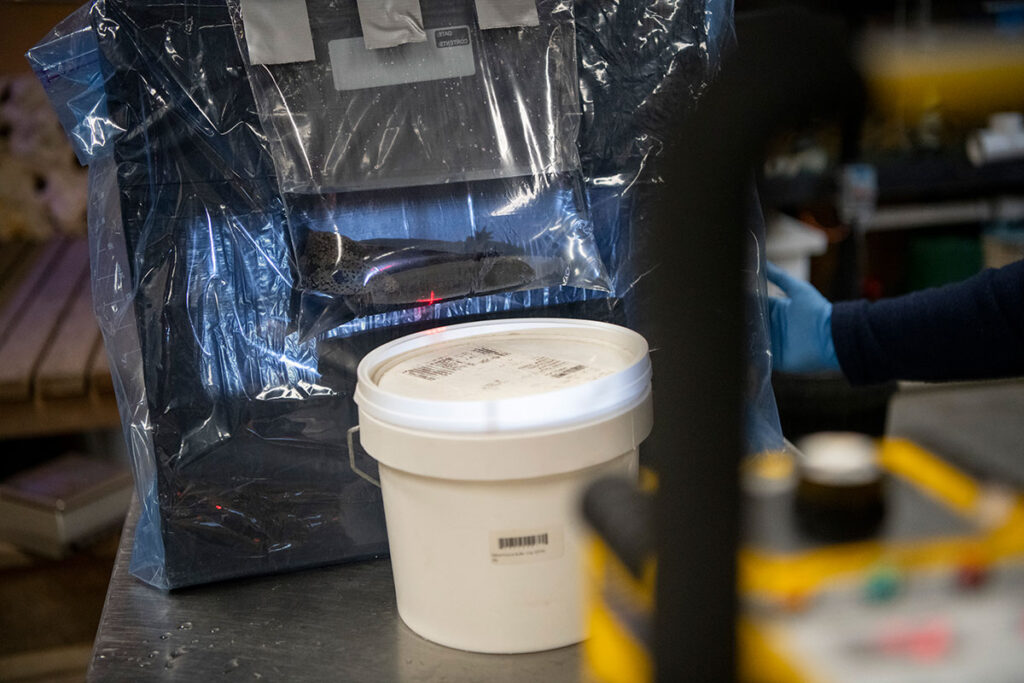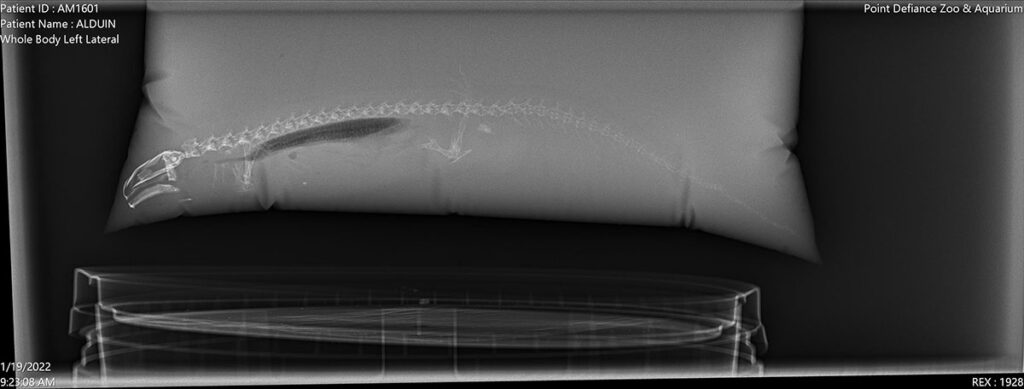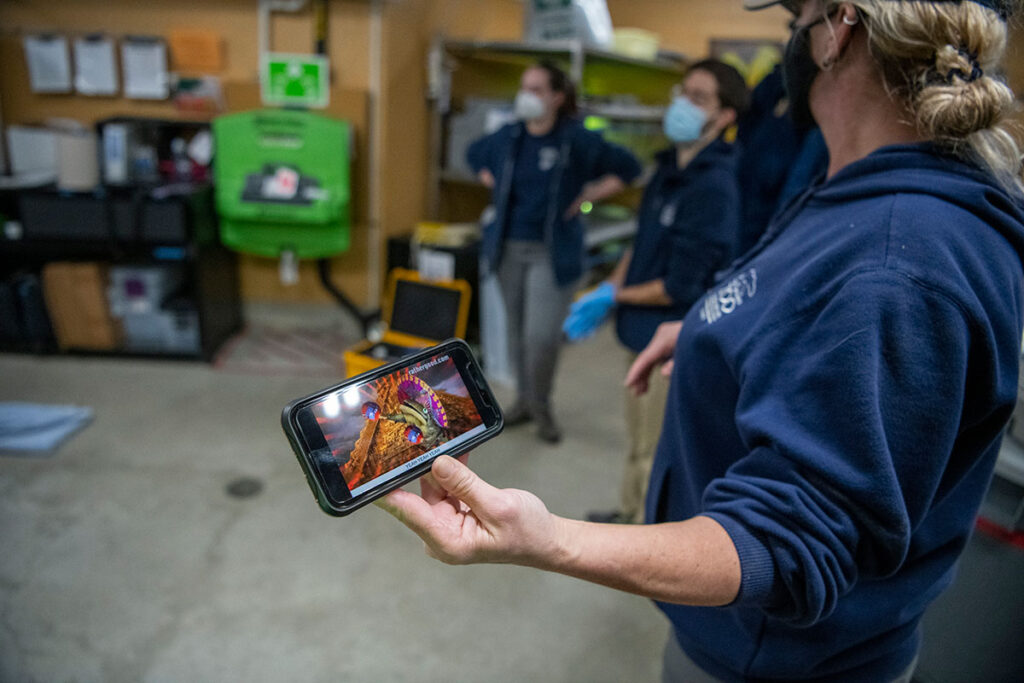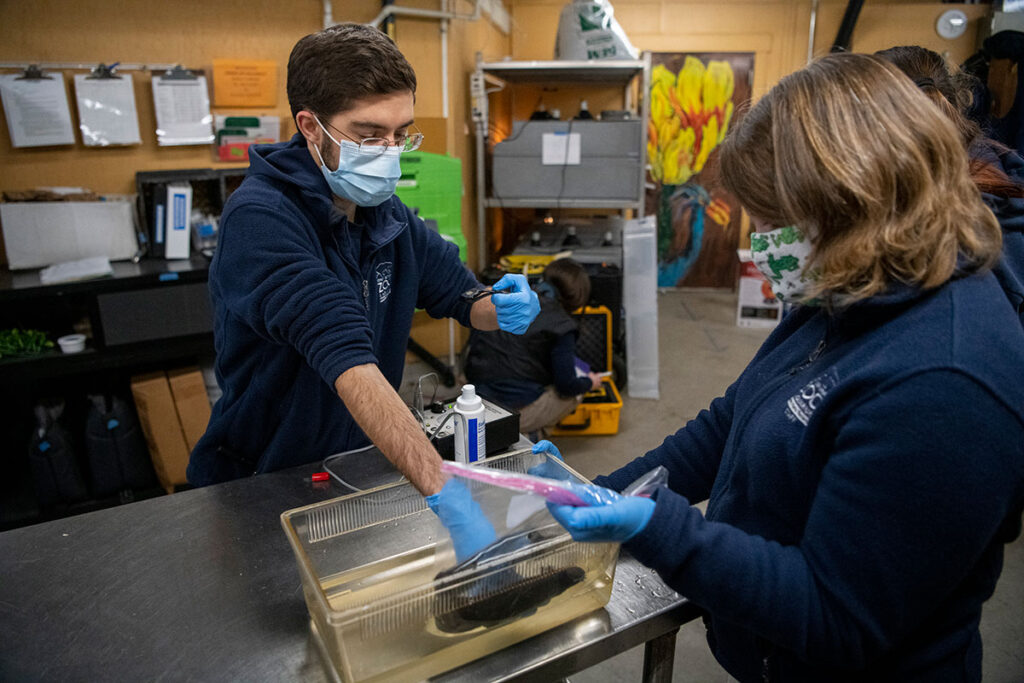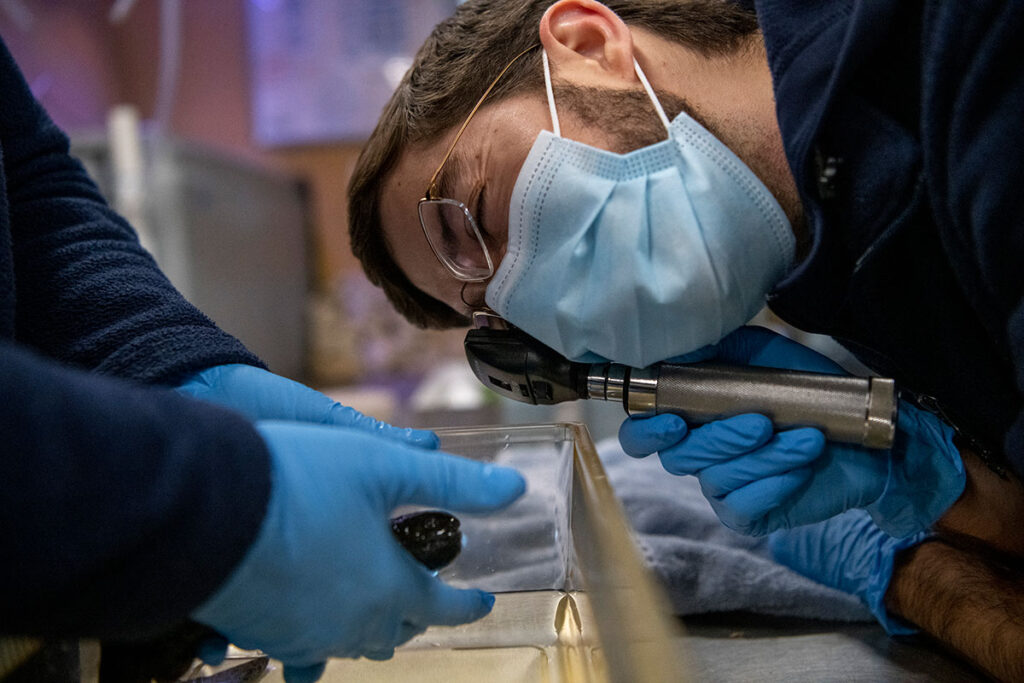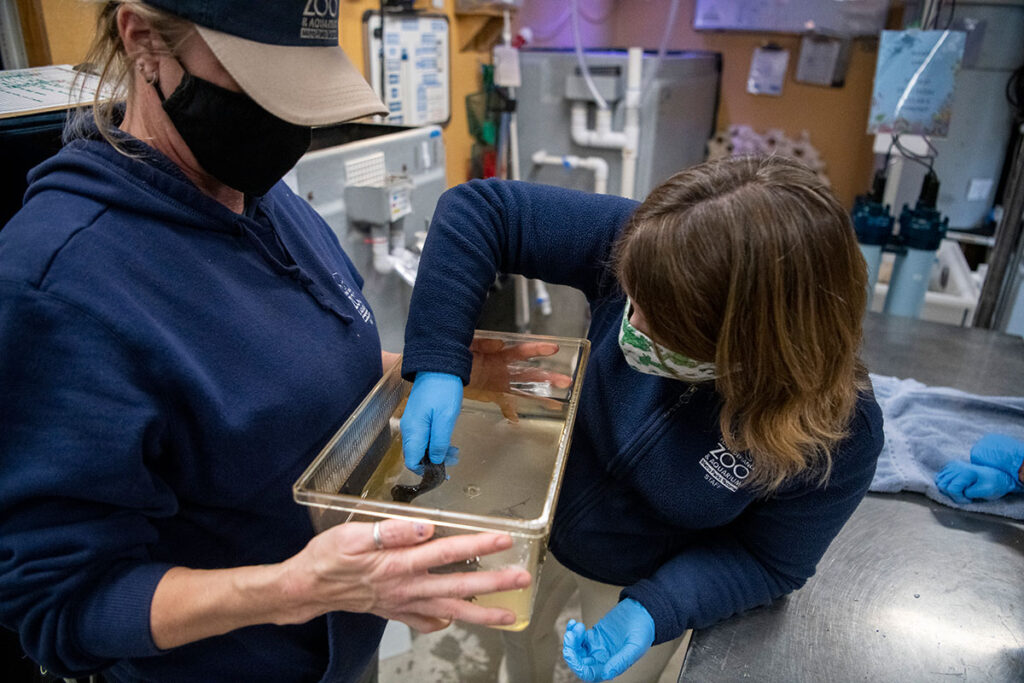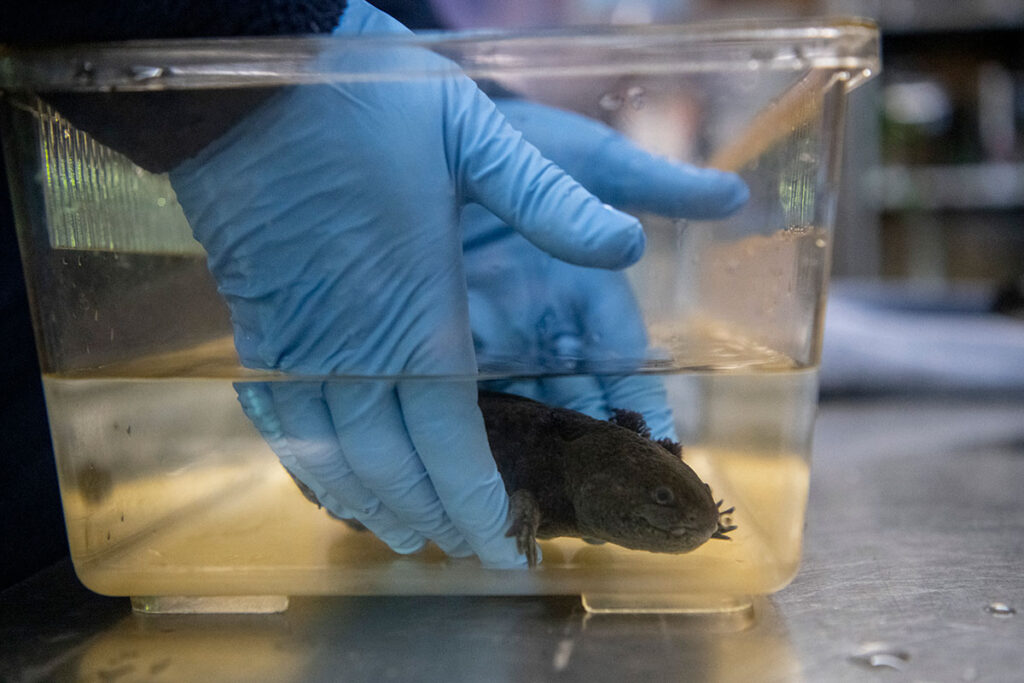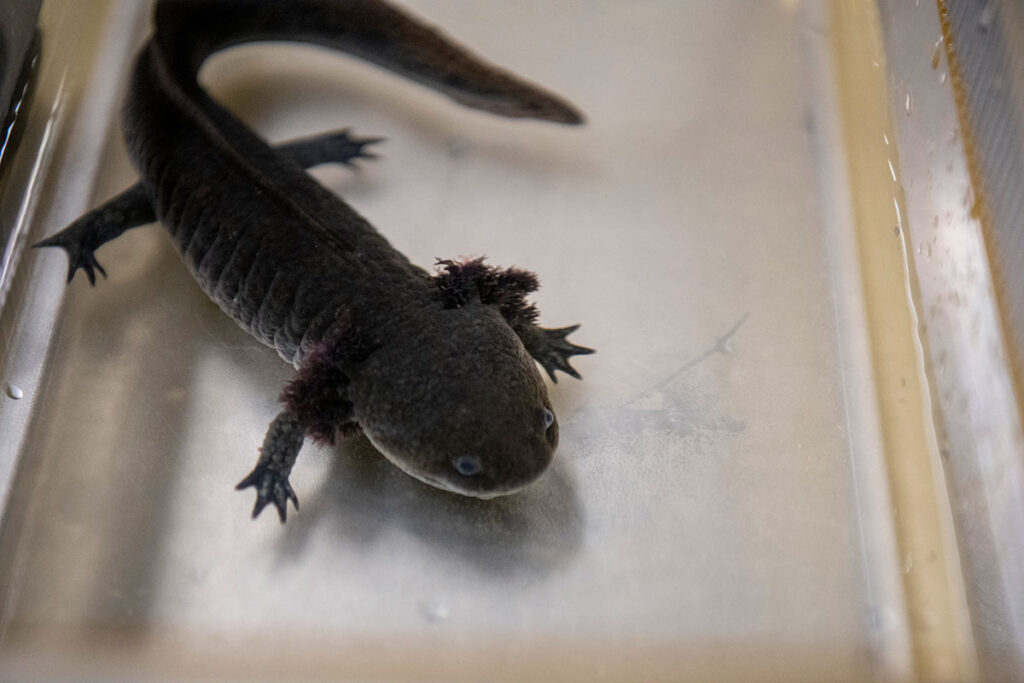Alduin, a five-year-old axolotl, recently underwent a routine wellness exam at Point Defiance Zoo & Aquarium. Veterinary and animal care staff weighed Alduin, took X-rays, and checked his eyes and heart to assess his overall health.
Axolotls, which are aquatic salamanders, are critically endangered in the wild due to loss of habitat and pollution of the canal system and lakes where they reside in central Mexico. “Axolotl” comes from an Aztec word meaning water monster.
Axolotls keep their juvenile features when they are adults and, therefore, live permanently in the water, which is different than other salamanders.
Alduin is caught in a net by Assistant Curator Donovan as staff begin the exam.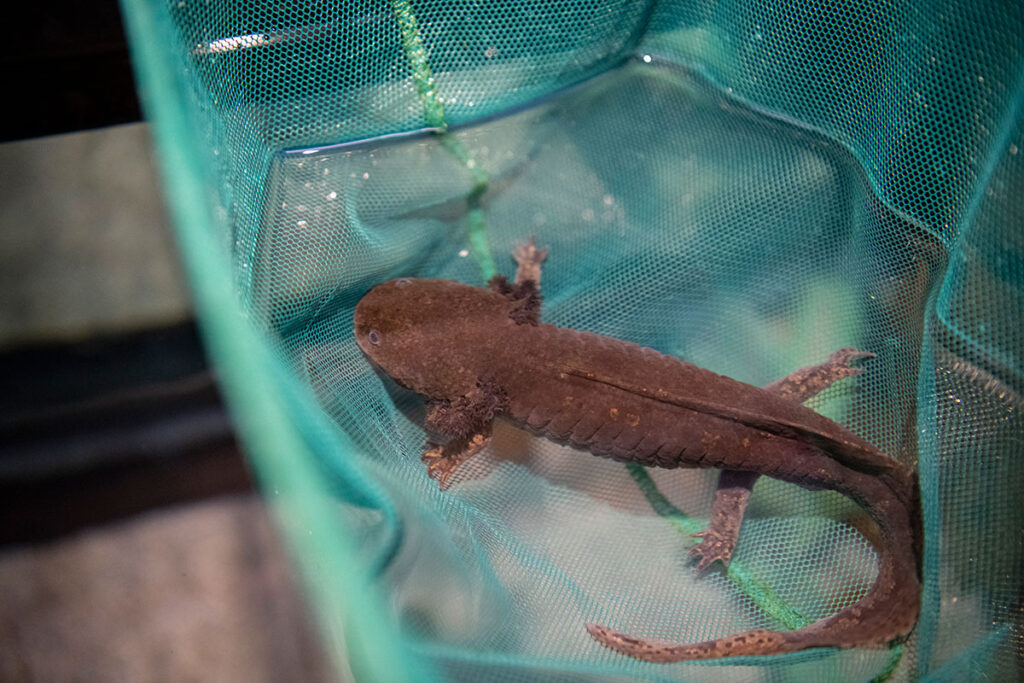
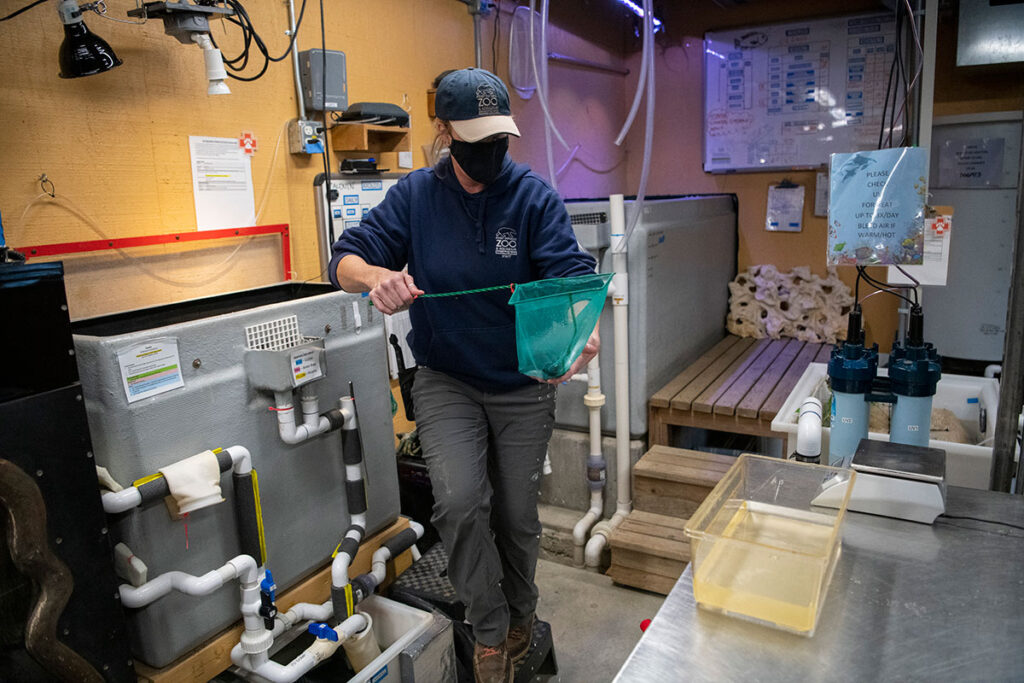
Alduin weighs in at 148 grams.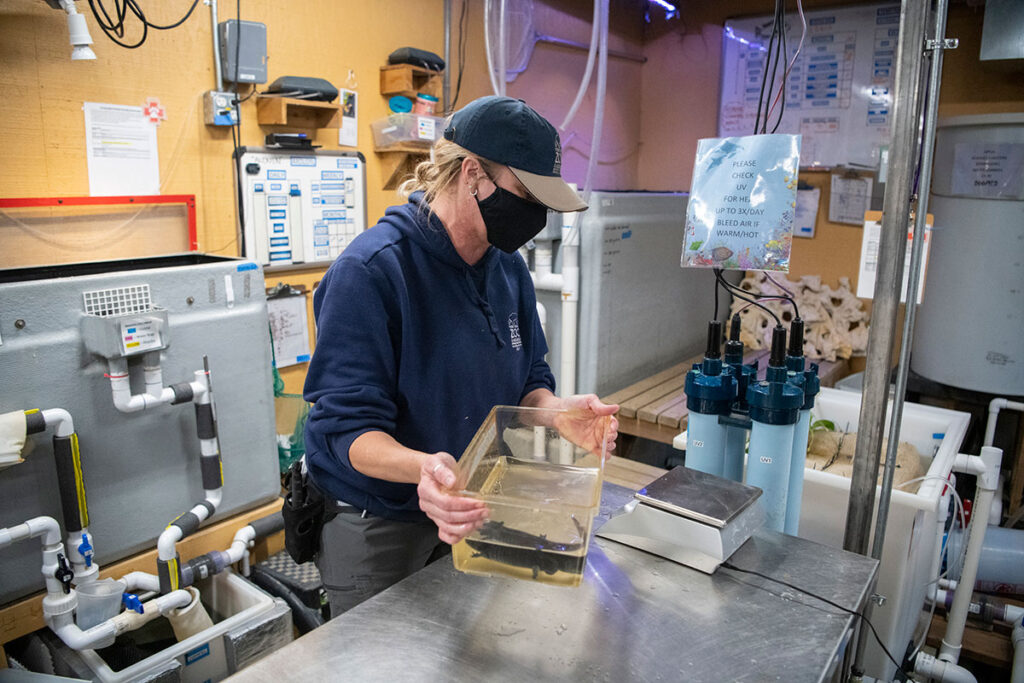
Veterinary Technician Sara takes X-rays of Alduin.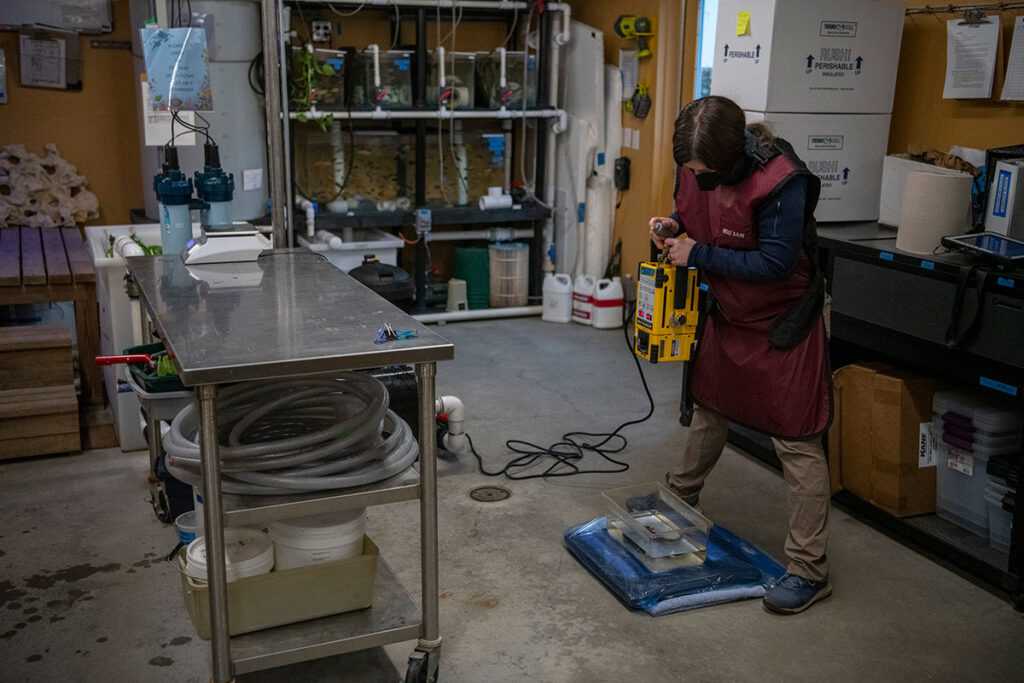
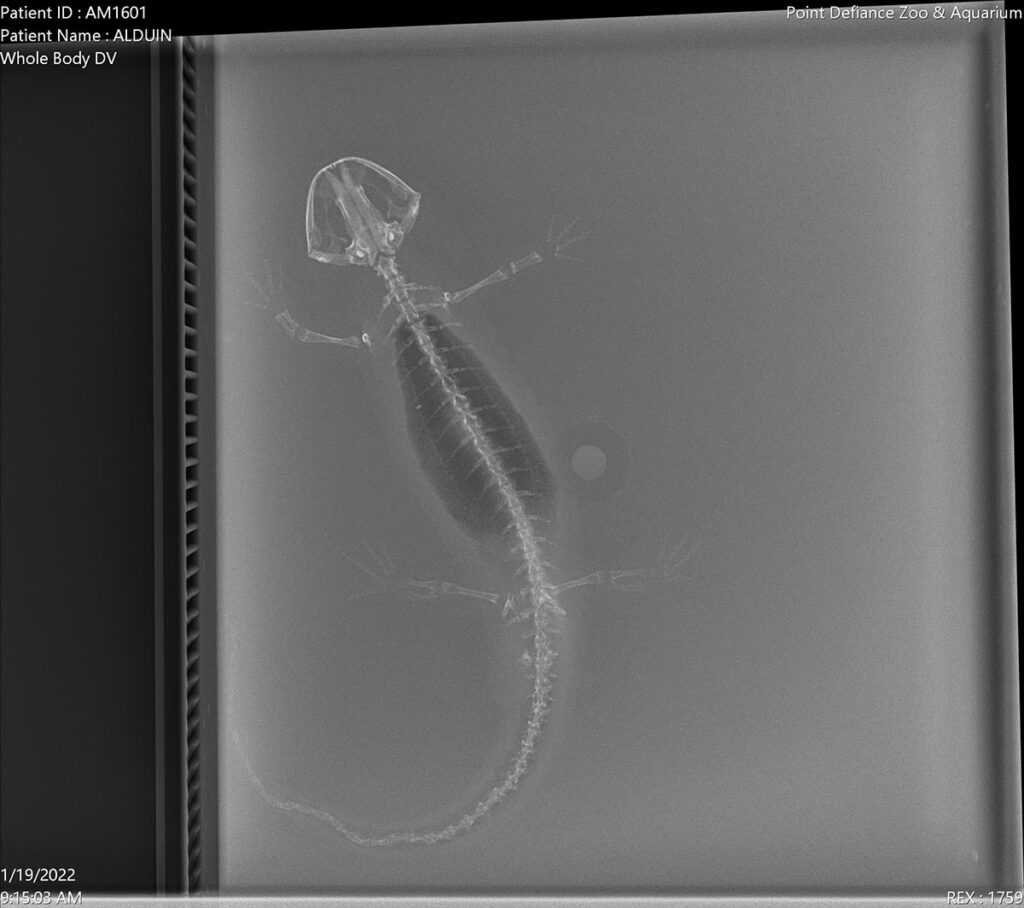
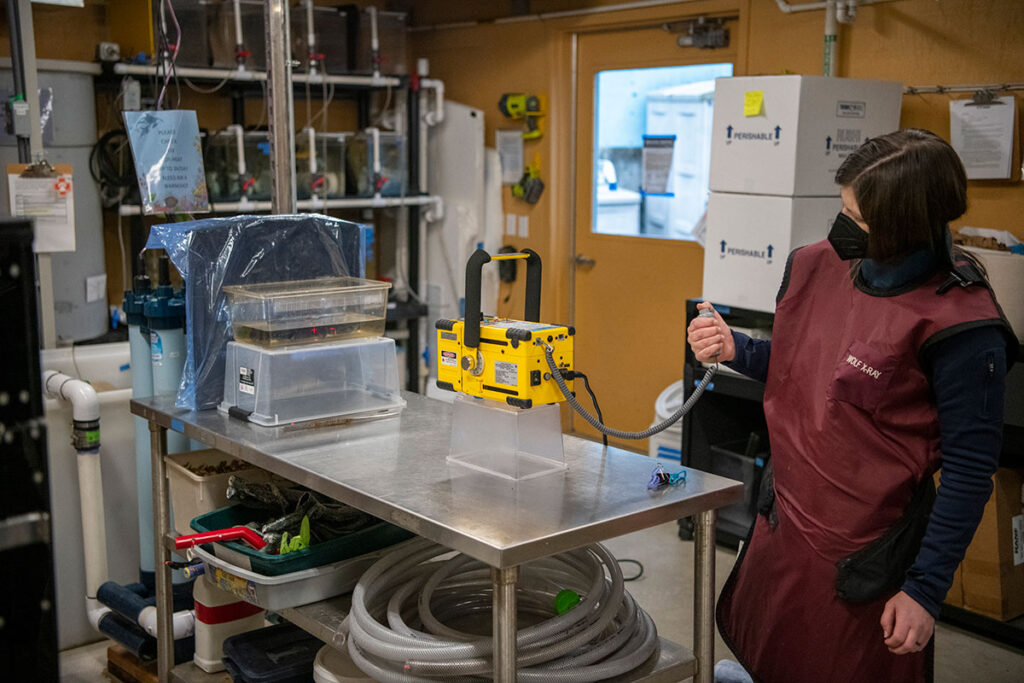 There was too much water between the side of the container and Alduin for the X-rays to turn out so Assistant Curator Donovan and Veterinary Technician Sara fill a plastic bag with water. Veterinarian Dr. Kadie Anderson places Alduin inside the bag, and Sara is able to get a good side-view X-ray.
There was too much water between the side of the container and Alduin for the X-rays to turn out so Assistant Curator Donovan and Veterinary Technician Sara fill a plastic bag with water. Veterinarian Dr. Kadie Anderson places Alduin inside the bag, and Sara is able to get a good side-view X-ray.
Assistant Curator Donovan shares a song about axolotls with the veterinary and animal care teams. Axolotls are able to regenerate lost limbs, their tail, and parts of organs such as their brain, heart, eye lenses and spinal cord.
Intern Veterinarian Dr. Colin listens to Alduin’s heartbeat, which sounds like slow waves on the shore.
Dr. Colin checks Alduin’s eyes. Axolotls have no eyelids.
Dr. Anderson takes one more look at Alduin, feeling his body and tail, while being careful to avoid his gills. Their gills extend from three branches on the sides of their heads. Axolotls breathe through their gills and their skin. They also expel waste through their gills.
Veterinary staff report Alduin is in good health!
